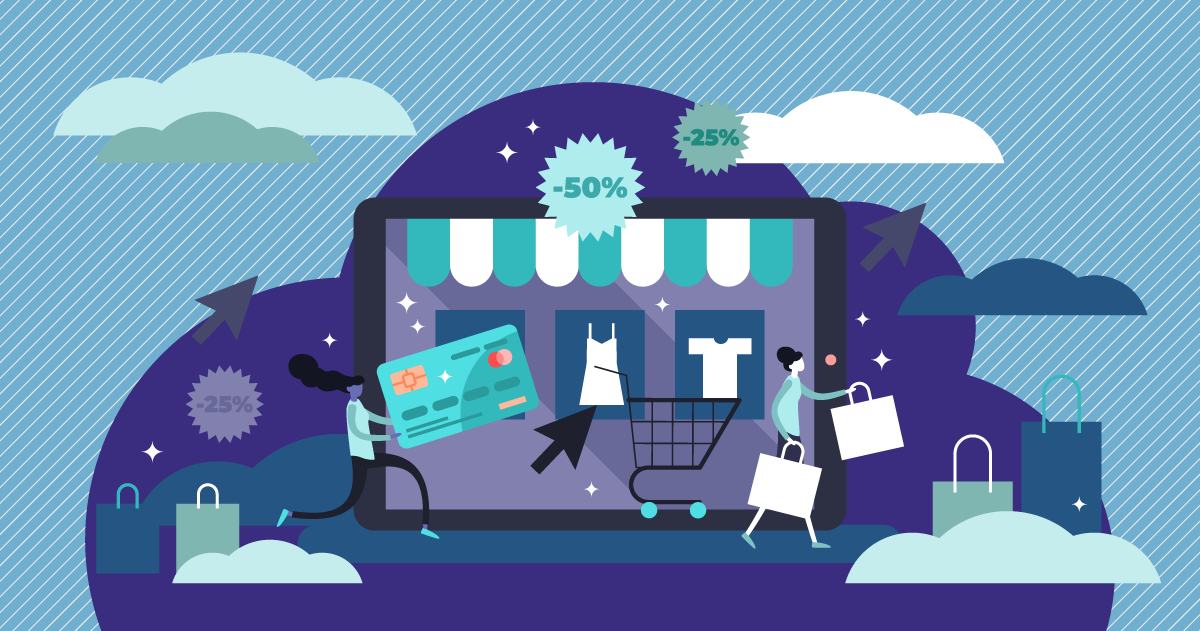A shopping portal can be an important component of a shopping rewards program and can open up the rewards program to all users, not just those who have a browser extension. A well-designed shopping portal showcasing all your available cashback and coupon offers can serve as a valuable resource, providing your customers with a seamless and rewarding shopping experience that starts with your brand.
But what are the key factors that make a shopping portal truly effective for both the customer and the company offering it? As you evaluate shopping portal solutions, we’ve listed a few considerations you should take into account.
What is a Shopping Portal?
First, let’s define the term:
In essence, a shopping portal is a centralized shopping site that displays all your rewards program’s available deals, cashback, and coupon offers in one place.
A shopping portal can also be known by the names “offer wall,” “shopping site,” or “offers/deal directory.”
Shopping portals let customers start their shopping journey by first seeing available cashback rewards offers and/or coupons in a location and from a brand (you) they’re familiar with, and then selecting the merchant to shop from.
Because they live within the existing customer experience of your brand, shopping portals give your customers a trusted place to start shopping, and further underscore your brand as a provider of value and deals.
Key Considerations for a Successful Shopping Portal
With the context of what a shopping portal is, here are a few of the elements you should consider when you’re building a shopping portal as part of your shopping rewards program.
- Personalization: Today’s customers appreciate tailored experiences. The goal should be for your shopping portal to deliver "Deals for You" content that becomes more tailored as users engage with offers and deals. In addition, leveraging browsing/purchasing data from other inputs in your cashback rewards program (e.g. browser extensions) can further inform effective personalization.
- Comprehensive Offerings, Effortless Navigation: A successful shopping portal should provide your customers access to a diverse range of deals, including both coupons and cashback, to ensure customers always find ways to save. And a seamless user experience is key. Intuitive site navigation and category carousels make it easy for shoppers to explore top deals and discover savings with ease.
- Mobile-First Design: Given the increasing prevalence of mobile shopping, a mobile-first design (or at least a page that is responsive and easily viewable on mobile phones as well as desktops) is essential so your customers can easily scroll available offers on any device. Other shopping enhancements that deliver a better user experience include features like "ever scroll," which mimics the intuitive, compelling nature of social media feeds. Ever scroll allows users to browse through deals without interruption, making their deal discovery feel natural and engaging.
- Minimal Technical Lift: A shopping portal that is hosted and maintained by a third party can offer a significant advantage, freeing up your development team from having to build and manage it and allowing you to to focus on your core business.
Potential Weaknesses of Some Shopping Portals
When evaluating shopping portals, it's important to be aware of potential shortcomings:
- Limited Control: Some shopping portals may not allow you to control offer display or curate deals, which can limit the ability to align the portal with brand and specific customer preferences.
- Limited Merchant Coverage: Some portals may not have partnerships with a wide range of retailers, limiting the user’s ability to earn rewards at their preferred stores.
- Limited or No Stacking with Other Discounts: Some portals restrict cashback eligibility when customers use coupon codes, gift cards, or other discounts.
Delivering the Best Shopping Portal for Your Customers
By carefully considering these factors, you can create a shopping portal that not only meets the needs of your customers but can also drive meaningful results for your bottom line. When evaluating shopping portals, it's crucial to consider how well each one can address these considerations and provide a seamless, engaging, and rewarding shopping experience for your customers while also helping drive incremental revenue for your business.






